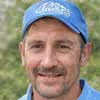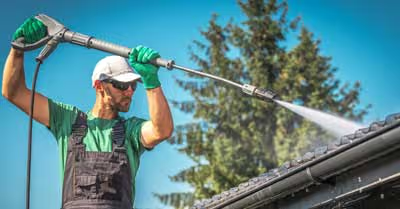Table of Contents
Most Common Causes of Leaks
A lot of things can cause your roof to leak, but there are some culprits that are more likely. Knowing the main causes of leaks can help you locate a leak. It can also help you prevent future leaks.
Negligence
It is important to always maintain your roof and regularly have it inspected. Old roofing materials and sealants become less durable and less effective with age. Regular maintenance can save you stress and money. Minor problems that can easily be spotted and fixed, often become avoidable major issues.
Weather
Leaks are usually first noticed when it rains, but weather can also cause the leak in the first place. Snow and ice can cause water to pool up. If this happens often, it can begin to seep into the interior of the home.
Wind can cause roof damage that leads to leaks. It doesn’t have to be a hurricane or tornado devastating an entire roof either. Wind can blow the shingles, or even tiles, off your home. It can also blow water underneath the roofing materials and allow it to flow inside.
The sun can also deteriorate your roofing materials over time. You should always keep an eye out for degrading materials to prevent a leak.
People
It is okay to walk on your roof. In fact, it is good to go onto your roof to inspect if for damages or to fix minor issues. However, heavy traffic, dropped tools, or improperly repaired areas are common causes of leaks.
Most Common Locations for Leaks
Finding the leak is often the hardest part of the repair process. Knowing where leaks usually occur can help you locate the leak quickly and make the whole job easier.
Sometimes, the leak does not actually start at the roof. Condensation can build up in the attic and seep into the interior of the house. Clogged gutters are a potential source of a leak as well. You should rule these out before looking high and low...well mainly high… for a leak in the roof.
Broken flashing is a major issue when it comes to leaks. Roof flashing is the metal sheeting used to deflect water, usually installed around vents, chimneys, walls, and valleys.
There are some places that are more likely to be the area where a leak occurs. You should check these locations first.
Valleys
This is where two roofing planes meet and they make a valley or indention in the roof. Sometimes, flashing is used in these valleys. Other times rolled roofing or laced shingles are used.
If the shingles are not cut properly, water can travel along them and invade your home. If the shingles in the valley are not pointed like an arrow, this should be a prime suspect in your hunt for the leak.
Chimneys
There are four different types of flashing around the chimney, so plenty can go wrong and cause a leak. If flashing is improperly installed, there is a chance a significant leak will form.
Cracks can also form around the chimney. A crack can let water seep behind the flashing and into the interior of the structure.
Shingles or Tiles
If you see any misplaced shingles you should check around those areas first. Shingles often get cracked or curls, and sometimes get stripped from the roof entirely. If you still don’t locate the leak, you should do a thorough inspection. Nails can come out of shingles and old shingles that are missing granules are a sign that they need to be replaced anyway. You should also keep your eye open for cracks.
If you have tiles instead of shingles, look for any that are cracked. They can also shift, so if you see anything that looks out of place you should take a closer look. Always be careful when walking on tile because they can be fragile.
Vents
Sometimes vents have rubber sealing that can begin to break down in as little as 10 years. This is especially true with newer homes. You should also check the flashing to make sure it can prevent water from coming into the home.
Finding Your Leak
Leaks are sometimes harder to spot because the location of the leak inside the home may be several feet away from the leak in the roof. Also, it may be difficult to know which part of the roof coincides with the interior leak.
It is important to find a leak early so that you do not get any more damage. The first place to look after you rule out condensation and clogged gutters is in the attic. This will give you a good look underneath the roof.
Always watch your step when you are in the attic because you have to walk on the joists. Otherwise, you may end up sticking your foot through the ceiling of your bedroom! Also, always try to keep your bearings or your efforts may end up being fruitless.
If it has rained recently, it should be easy to spot wet spots. However, if it hasn’t rained you can still look for darker areas. Mold is also a sure sign of moisture that you should be on the lookout for.
Use insulation as a guide. Leaks cause damage to your insulation that you can follow to the source of the water. Damaged insulation can be easier to spot than damaged wood making insulation a perfect way to work your way back to the leak. However, you still need to be aware that the leak can still be several feet away from the damaged insulation. This is because water can be diverted as it makes its way down.
Sometimes you can clearly see the cause of the leak in the underside of the roof. If you see a nail or some other object penetrating the roof, you have likely found the leak. You can also check out the seals around the vents from the attic.
If there is no detectable water damage that you can follow back to the leak, you can use a water hose to simulate rain. This method is best done with two people. One person will go up to the roof and spray it down with water. You should always start around the places you believe the leak could be. A second person will wait in the attic with a flashlight and examine the interior side of the roof for any leaks. This test can tell you if your roof is in good enough condition to withstand heavy rain.
By now, you should have found your leak and it is time to repair it!
Fixing Your Leak
A leak can cause a ton of problems including significant damage and dangerous mold. It is good to know how to repair your roof so that you can get it done quickly before it can cause more damage. There are two extremely popular types of roofing materials that you may need to fix, shingles and tiling. In addition, both styles of roofing could have issues with the flashing.
Shingles
With shingles, the first thing you want to do is secure any that are curled. You can use asphalt roofing cement or other similar products. Brush the product on generously to the underside of any curled shingles. Press firmly to make sure that all edges are secure.
Now, you must replace any shingles that are damaged or missing. Make sure you get shingles that match your existing ones. If you have shingles that look rotten or cracked, they should be replaced.
If you need to replace a damaged shingle, you should use a pry bar to take the nails out. Once every nail is removed, you should be able to easily slide the shingle away. It is also good to remove any roofing cement that has been left on the roof.
Then, you will slide the new shingle under the shingle directly above it with proper alignment. Use galvanized roofing nails to secure the top of the shingle and in each corner. Finally, you will cover all of the nails with roofing cement and carefully smooth down all of the shingle edges with a putty knife.
Tile
Tiles are a great roofing material for protecting your home against the elements. Unfortunately, they can crack or even break which can lead to leaks.
Sometimes, you can use RT-600 tile adhesive to fix cracks. Other times, though, you need to replace the damaged tiles to fix the leak.
With every broken or damaged tile that needs to be replaced, you will first lift up the one that overlaps it with a pry bar or crowbar. You can slide pieces of wood underneath it to keep it lifted while you carefully slide the damaged tile out.
Just like with shingles, you need to make sure the new tiles are the same color and style as your old ones so that they blend in. Take your new tile and slide it in the empty spot. It should easily secure, but you should double check that it does not interfere with adjacent tiles. Take out the wood you used to hold the overlapping tiles.
Flashing
It is very easy to fix the existing flashing. Use a caulk gun filled with roofing cement to reseal any joints. If the joints have already been resealed, you can apply a new coat with a putty knife.
If the flashing is rusted or deteriorated, your best bet is to replace it. First, you need to remove all of the flashing, cement, and sealant that needs to be replaced. Also, shingles should always be under the flashing to ensure a leak proof home.
You may need to remove some shingles on top of the flashing that you are replacing. Just make sure you replace them after installing your new flashing.
You can buy different sizes of flashing and they make pre-bent corner flashing to make your life easier. It is important to make sure that the flashing will keep any and all water out. To do this, you need to fit it tightly around all corners, walls, chimneys, and vents. It should also extend down to the shingles and about 8 inches above them.
Straight flashing should overlap corner flashing so that water cannot intrude. Use quality sealant to secure them together. Hammer a nail at the bottom of the flashing. Then, put an entire course of shingles on top of the newly installed flashing. Alternate between flashing and shingles working your way up the roof. Each piece of flashing must overlap the previous one by 3 to 4 inches.
The peak of the roof requires a custom piece of flashing. Bend the flashing to match the peak of your roof and secure it with roofing cement. Again, you will put a nail into the bottom. This, too, will be covered with shingles.
The flashing replacement process is similar with tile roofs. You need to use the techniques you would use to replace tiling to remove it, take off the old flashing, secure the new flashing, and then replace the tiles.
Roofing Repair Tips
Use Light to Locate a Leak
Inside your attic, you can turn off your flashlight and look for any light coming in through the leak. This is especially helpful if you know the general area of the leak. This is an easy way to spot the leak that doesn’t require two people or a simulated rainstorm.
Use Reflections to Your Advantage
Water reflects light so use this to your advantage when looking for your leak. It is easy to spot reflecting water on metal surfaces when you shine your flashlight at them. You probably have nails poking through into your attic that you can use to locate water.
Check Dormer Walls
A dormer is a part of the roof that projects out away from the rest of the structure. They commonly have windows, doors, or even balconies, but some do not.
Dormers give water plenty of spots to build up and drip down. You should inspect all of the caulking to make sure it isn’t old or cracked. You can also check that the seal is sufficient by poking around with a putty knife. If you find any worn out caulk, you should replace it as soon as possible.
The siding on the dormer should also be checked regularly. If it is cracked or rotted, you should think about replacing it.
Recent Articles
















